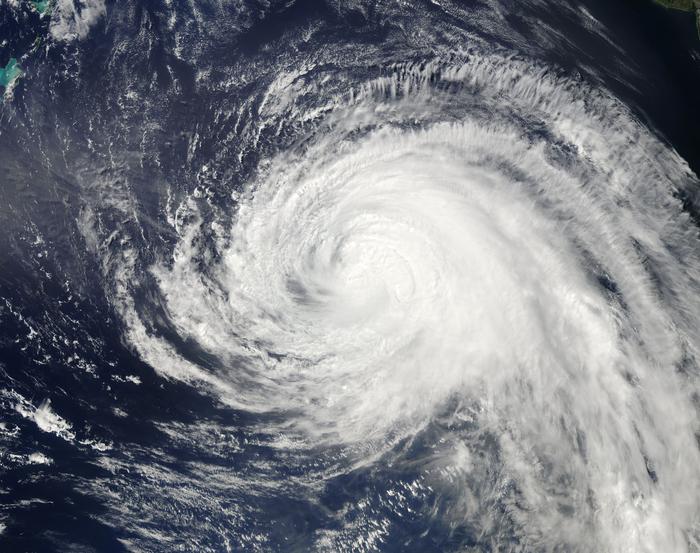Hurricanes represent one of nature’s most powerful forces, capable of wreaking havoc on coastal communities and ecosystems. While their impact on terrestrial environments is well-documented and understood, the oceanic effects of these colossal storms remain less explored territory. Recent research from the Marine Biological Laboratory (MBL) has shed light on how hurricanes, such as Igor and Fabian, disturb ocean sediments and influence the deep marine environment. These findings not only advance scientific understanding but also raise important questions about the broader implications of hurricanes on oceanic carbon storage and marine ecosystems.
Located in the Sargasso Sea approximately 47 miles southeast of Bermuda, the Oceanic Flux Program (OFP) has been collecting data continuously since 1978, making it the longest time series of its kind. This program employs unique subsurface platforms moored to the ocean floor that trap sinking particles—comprising sediments, microplankton, and pollutants—at various depths. These biweekly samples aid researchers in identifying environmental changes over nearly five decades. Recent work has specifically addressed the impacts of hurricanes on this previously under-studied deep ocean environment, revealing the significant transport of materials during and after such extreme events.
The research team, led by MBL Assistant Research Investigator Rut Pedrosa-Pamies, meticulously studied sediments displaced by hurricanes Fabian in 2003 and Igor in 2010. Interestingly, the sediment delivered by Hurricane Fabian to the ocean depths was equivalent to what would typically accumulate over a year, but achieved in just two weeks. These carbonate sediments are critical not only for marine ecosystems but also for their potential role in carbon sequestration—storing atmospheric carbon in the ocean for millennia. When buried, these sediments also serve as a buffer against ocean acidification, a pressing concern arising from rising carbon dioxide concentrations in the atmosphere.
The mechanisms behind this sediment transport were not well understood prior to this study. Pedrosa-Pamies highlighted the importance of their findings, stating that it was the first instance where hurricane-induced transport of shallow carbonate platform materials to the deep ocean was documented in real time. This wasn’t limited to carbonate materials; the hurricanes also redistributed other essential nutrients such as phosphorus and various lithogenic minerals, along with pollutants. This multi-faceted impact underscores the hurricanes’ role as agents of significant ecological change.
The effects of hurricanes are complex and variable, influenced by numerous factors including ocean depth, pre-existing upper-ocean conditions, and specific hurricane characteristics. This research revealed that Hurricane Igor, unlike Fabian, left carbonate platform particles in suspension within the water column for an extended duration. Understanding this dynamic offers critical insights into how these particles can influence the deep-sea microbial ecosystem and sedimentation processes.
Coral reefs and their adjacent shallow-water platforms dominate many of the world’s oceans. Over time, these ecosystems build extensive carbonate structures, making them key players in ocean sedimentary processes and the carbon cycle. Approximately half of all shallow-water carbonate material produced globally originates from these reefs, contributing significantly to the carbon sequestration processes that mitigate climate change effects. The findings regarding hurricanes’ depositions of these valuable sediments highlight their role in combating oceanic acidification—a phenomenon that jeopardizes marine biodiversity and the balance of oceanic life.
This groundbreaking study emphasizes the importance of considering hurricanes—not just as destructive forces, but also as natural events that can have both immediate and long-lasting impacts on oceanic health. By enhancing our comprehension of sediment dynamics in relation to extreme weather events, researchers can better inform conservation strategies and climate change responses.
Moreover, the findings have broader implications for understanding the carbon cycle and the potential consequences of climate change. The persistent transfer of sediment and nutrients to the deep ocean could enhance the ability of marine ecosystems to sequester carbon, thereby playing a crucial role in mitigating the impacts of elevated atmospheric CO2 levels. As global temperatures rise, understanding such interactions becomes paramount in preserving the ocean’s health and resilience.
Drawing on nearly half a century of data, the Oceanic Flux Program’s long-term study strengthens the foundation for future research on episodic environmental events, including hurricanes. It provides a necessary reference point to analyze how similar storms across the globe might impact different carbonate platforms and marine ecosystems, emphasizing the need for comprehensive monitoring efforts.
Moreover, the methods utilized in this study reveal the challenges inherent in conducting oceanic research during extreme events. The continuous nature of the OFP’s observations demonstrates the critical importance of time-series data in understanding marine environments profoundly affected by episodic phenomena like hurricanes.
Research efforts like these require collaborative teamwork, as emphasized by Pedrosa-Pamies, thanks to the dedication of the entire crew involved in collecting the data and maintaining the observation platform. It is a testament to the spirit of scientific inquiry and the necessity of diverse expertise in tackling complex biological and environmental challenges.
The work conducted through the OFP is vital in uncovering mechanisms governing sediment transport during major storms. While the immediate effects of individual hurricanes may appear limited on a global scale, the implications are vast in terms of carbon sequestration, marine ecology, and understanding the deeper implications of extreme weather patterns exacerbated by climate change.
Overall, this research represents a significant leap in our understanding of the intricate relationships between atmospheric phenomena and marine ecosystems, and it opens up new avenues for research aimed at addressing the consequences of climate change and preserving ocean health.
Subject of Research:
Article Title:
News Publication Date:
Web References:
References:
Image Credits:
Keywords
Tags: coastal community resilience against stormsdeep ocean ecosystemseffects of hurricanes on marine lifeextreme weather and ocean dynamicshurricane impact on ocean sedimentsimplications of hurricanes on marine environmentslong-term ocean data collectionmarine biological laboratory research findingsmarine carbon storageOceanic Flux Program researchSargasso Sea environmental studiessediment transport during hurricanes





